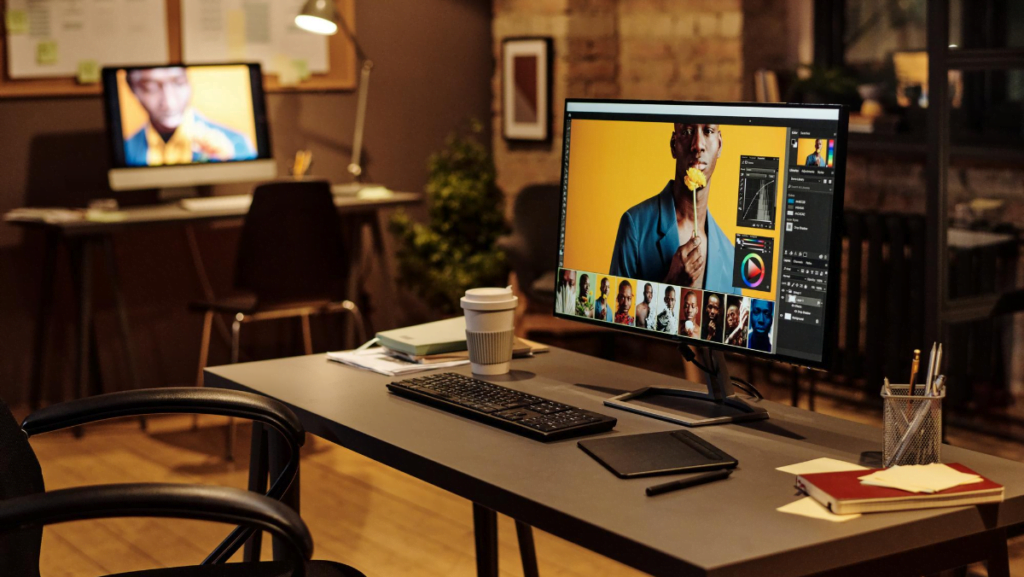AI graphic design utilizes machine learning algorithms to generate designs autonomously or augment designers’ capabilities. Leveraging mathematical models and training datasets, AI systems can learn styles, patterns, and techniques used in graphic design and implement these elements in new, innovative ways.
AI’s integration into graphic design offers considerable benefits, like reducing manual labor, saving time, and allowing designers to focus more on creativity. However, it also poses challenges, like the need for quality control and technical expertise to manage AI tools.
AI’s Role in Modern Graphic Design
AI’s applications in graphic design are vast and continually evolving. It serves various purposes, offering unprecedented convenience and innovation.
Generating New Designs from Scratch
AI systems like generative design tools can create unique and complex designs from scratch, which would otherwise be time-consuming or nearly impossible for humans.
Automating Repetitive Tasks
AI aids in automating repetitive tasks like resizing images, formatting text, and color correction, freeing up valuable time for designers to concentrate on more creative aspects.
Enhancing Design Efficiency
AI drastically improves efficiency in the design process by providing quick solutions, like suggesting color palettes or generating numerous design options based on input parameters.
Personalizing Designs
AI can tailor designs to individual users by analyzing data on user preferences and behaviors, leading to more personalized and engaging content.

Unveiling AI-Generated Graphics
Several AI tools are creating impressive results in graphic design. Vinci, for example, utilizes machine learning to generate compelling posters based on textual input. Neural Style Transfer, another AI tool, transfers the style of one image to another, creating unique and artistic visuals. Google’s Deep Dream, uses AI to transform ordinary photos into hallucinatory, dream-like images.
AI’s Impact on the Graphic Design Industry
AI is reshaping the graphic design industry. It’s opening new avenues for graphic designers, aiding them in generating out-of-the-box designs with precision and speed. However, AI also presents challenges, primarily because it could potentially automate creative jobs.
The future of graphic design seems to be a blend of human ingenuity and AI automation, leading to an exciting era of design innovation.
The Future of AI in Graphic Design
As AI advances, it’s likely to gain even more potency in graphic design, generating increasingly realistic and innovative designs. This progression will inevitably alter the ways graphic design is taught and practiced, making proficiency in AI tools a necessary skill for future designers.
Conclusion
AI’s integration into graphic design is transforming the industry, automating tedious tasks, facilitating creativity, and shaping the future of design. While AI poses certain challenges, its benefits are undeniable. To stay ahead in this rapidly evolving field, embracing the emerging trend of AI-driven design is essential.
Take the first step towards the future and discover how AI graphic design can revolutionize your design process. Explore, learn, and adapt to keep pace with graphic design trends, where human creativity meets machine intelligence.




